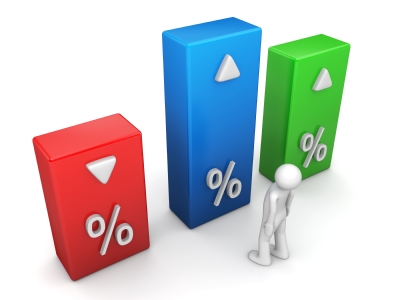Bounce rate, time on site and pages per visit
Which metrics to pay attention to in Google Analytics
Google Analytics is a powerful web analytics tool. When you have inserted Analytics tracking into the source code of each of your website’s pages, you will be able to monitor who is visiting your website, how long they are staying on the site or on individual landing pages, the keywords they are using to find particular pages, and much more.
If you’re just getting started using Google Analytics, it’s difficult to know what you should pay attention to. Which metrics do you focus on out of the many different options? This post will should help you pick out a few sections to keep your eye on and will offer a few tips on improving your website’s performance based on what these metrics show. If you own an ecommerce business or would like to measure downloads, registrations, etc, you may have to learn how to set up goals.
If you’re not yet familiar with Google Analytics, I advise having a play around. Get used to the vertical menu on the left of the screen. This will be your go-to point for finding almost all of the information you need in order to establish your website’s performance.
First things first – get an audience overview
For the moment, we’ll keep it simple. In this post we will only discuss three core metrics. If you want more detailed information, check out the Google Analytics Support website or get in touch with us on Facebook, Twitter or LinkedIn and let us know what you want.
We’ll begin by getting an overview of your audience. To find this section click the Audience button on the left hand side of the screen. A drop-down menu will appear. Click Overview.
You will now see: visits, unique visitors, pageviews, pages/visit, etc. There should also be a pie chart showing the percentage of new versus returning visitors.
If you have to focus on anything on this page, pay special attention to the following:
- Pages/Visit
- Avg. Visit Duration
- Bounce Rate
This is not to say that you should ignore the other variables. Certainly, variables like monthly visits will give you a good idea of how many people you’re reaching. The only problem with numbers like these is that they do not offer any actionable insight into what is happening. Of course, if in April you get 600 visits, and in March you get 300, then something is probably wrong. Unless you are undertaking activities that search engines like Google are likely to penalise, this is not something you should worry too much about.
So, what does ‘pages per visit’ tell you? Or for that matter, bounce rate and ‘average visit duration’? These simple yet powerful metrics give you an idea of how long people are spending on your site before exiting.
Bounce Rate
According to the Google Analytics Support site, ‘The bounce rate is the percentage of bounced visits to your site,’ or ‘the percentage of visitors that see only one page during a visit to your site’. Bounce rate does not have anything to do with the time the visitor spends on the page.
What should your bounce rate be?
Well, this really does depend on the function of your page. A high bounce rate is not always a bad reflection of your website, though whether or not Google shares this opinion is anyone’s guess. If someone finds the content they are looking for on the first page of your site, then of course they may be likely to exit. If a user is undertaking research, your bounce rate may be lower as they scan and click from topic to topic. Similarly, if you’re just trying to get someone to sign up to receive your newsletter, they’re probably going to do so and then bounce off the page. So long as your bounce rate is not too far about the 50% mark, you probably don’t have anything to worry about.
What can you do to improve a high bounce rate?
Analyse your site content. This might include:
- Delving deeper into Google Analytics. Find out what bounce rate is by landing page, new vs. Returning customers, traffic sources, etc.
- Making sure your web design is user-friendly and suits the content as well as your business branding
- Ensure that the keywords used to find the site are reflected in the content on the page
- Consider your page’s choice of keywords. Do users expect something different when they land on your site? If so, you may need to adjust the keywords or improve your meta description and meta title so that people don’t click on the link to your site expecting something entirely different.
- Make sure Analytics tracking code is installed on every page
- Take a look at your site’s load speed. If your website takes too long to load, people will be more likely to hit the back button.
- Understand how your visitors are behaving when coming to your website. What are the clicking on, what are they not clicking on, etc.
Average visit duration or time on site
The average visit duration is the amount of time a user spends on your website. This is calculated from the first page they land on to their exit page. However, it’s worth noting that the time spent on the last page is not calculated as there’s no data to indicate when the user/visitor left.
Google Analytics support has provided a great example of how this works:
- Page 1 (10:00 a.m.) Page 2 (10:05 a.m.) Page 3 (10:06 a.m.) Exit
- Page 1 (9:00 a.m.) Page 2 (9:01 a.m.) Page 3 (9:06 a.m.) Exit
- Page 1 (2:00 p.m.) Page 2 (2:15 p.m.) Page 3 (2:16 p.m.) Exit
At first glance it looks as though the first user spent 6 minutes on the site, the second spent 6 and the third spent 16 minutes. This is not the case. Actually, the time spent on site would be the following, respectively: 5 minutes, 1 minute and 15 minutes.
This would then be added up to give a total of 21 minutes, and then divided by 3. The average time on site would display as: 7 minutes.
A few tips to increase time on site:
- Cross link pages – make sure that there are links within the content on each of your pages. When clicked, these links should take the user to another page on your website.
- If your website is information heavy, consider adding a sidebar containing features such as ‘popular posts’ or ‘related links’. This should entice people to click onto other relevant pages, but still keep them on your website.
- Make sure that your text is big enough! If I can’t read something because it’s too small I often hit the back button. The same is true of content that appears in a big block format. Break it up into manageable chunks and insert headings and sub-headings to make it look more appealing. Many people are scanners. If your content looks heavy you will likely scare them off.
- Include engaging content – embedded videos, pictures, etc.
- Make sure your website is user-friendly. If someone can’t find something they’re not likely to spend too long looking for it, especially when Google returns so many search results. Before you’ve even begun building your website, consider a design that will be easy on the eye, will fit the persona of your ideal user as well as the content on the page.
- Limit the number of ads you place on your site
Pages per visit
The pages per visit metric is simple. It displays the average number of pages a user has visited in a single session. If a user refreshes this page, this is counted as an additional page view.
What can you do to increase pages per visit?
- As with improving bounce rate, direct users to additional related content
- Cross link the pages within your site
- Make sure you have good content. If you don’t, this is where you need to start. And in the long term, this is a better strategy anyway as it will help you increase loyal, returning customers.
- Split long blog or article posts into 2 or 3 paragraphs
- In general, follow the same tips we offered for bounce rate and time on site
Which Google Analytics metrics do you like?
I did a quick survey amongst a few of my digital marketing savvy friends and here are some of their favourites:
- “The overall organic searches”- Mary S.
- “I say page views are MUCH more important than unique visitors because it shows you that both your usability and content are working to keep people on the site, where as unique visitors just tell you your SEO is working” – Shaun M.
- “Depends what I’m looking for. Unique visits for SEO and pages per view for engagement” – Joyce N.
- “I like the little line that goes up and down and tells me how many people like my site and keep coming back to it — in other words, what Shaun said!” – Chris B.
- “The ones you put into Excel and augment with other data. Failing that, a pivot table of products sold and category by visitor type is always good” – Pete W.
And, there was quite a lot of ‘I second Shaun!’
So, what are your views?
















